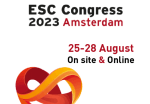Percutaneous coronary intervention (PCI) is considered the treatment of choice in ST-segment elevation myocardial infarction (STEMI). However, it is widely acknowledged that, in many cases, there are significant lesions in other coronary arteries. Previous randomized studies have shown that complete revascularization in a second procedure is more beneficial than intervention only in the culprit artery....
BIFURCAT Registry: Long Term Diabetes Impact on Bifurcations PCI Outcomes
The impact of diabetes in patients with coronary artery disease (CAD) are well known, and after percutaneous coronary intervention (PCI), outcomes tend to be less favorable, with higher restenosis rate, repeat myocardial infarction (MI) and stent thrombosis. Despite the development of drug eluting stents, procedures and techniques, treating bifurcation lesions in diabetic patients still show...
Is Complete Revascularization Really Necessary after AMI in the Elderly?
The population over 75 is growing gradually, which entails an increase in acute myocardial infarction (AMI) in this group. As we all know, it is fairly common for AMI to present with multivessel disease. It has been shown that younger patients will benefit from complete revascularization vs. a simple resolution of the culprit vessel. However,...
OCT-Guided PCTA: Does It Offer any Benefits?
For many years, percutaneous transluminal coronary angioplasty (PCTA) has expanded significantly worldwide. However, despite the demonstrated advantages of intravascular ultrasound (IVUS) in terms of minimal luminal area, reduced cardiovascular events, and restenosis, its use is not very common due to various reasons. On the other hand, optical coherence tomography (OCT) offers even higher resolution than...
What to Do in Cases of AMI with Multivessel Disease
The presence of lesions in multiple vessels is common in ST-segment elevation myocardial infarction (STEMI). It has been shown that, when they are treated in a second procedure, patients have a better outcome. To date, there is limited information available on percutaneous transluminal coronary angioplasty (PTCA) in vessels with severe non-culprit lesions during primary angioplasty....
ESC 2023 | OCTIVUS TRIAL: Is OCT Superior?
Researchers conducted a multicenter randomized study involving 2008 patients undergoing coronary angioplasty (PCI). In this group, 1005 patients underwent a procedure guided by OCT, and 1003 patients by IVUS. The average age of participants was 65 years, 21% of subjects were women, and there were no significant differences between both groups. The primary endpoint was...
ESC 2023 | ARREST Trial: Is It Necessary to Have Specialized Hospitals for Cardiac Arrest?
Researchers conducted a randomized study involving 827 patients who experienced out-of-hospital cardiac arrest without ST-segment elevation myocardial infarction, and then underwent percutaneous coronary intervention. In this group, 414 patients were transferred to a specialized cardiac arrest center (CAC), while 413 were taken to the geographically closest hospital (closest emergency department, CED). The primary endpoint (PEP)...
ESC 2023 | Anticoagulation After Primary PCI in STEMI Patients
The empirical prescription of anticoagulants after percutaneous coronary intervention (PCI), also know as post-procedural anticoagulation (PPA), is nowadays a common practice that uses various types of medications. Despite studies like HORIZONS-AMI and EUROMAX, in which 41% of patients received PPA, and the CCC-ACS registry, where 75% of subjects received PPA after primary PCI, European and...
ESC 2023 | Extended Monotherapy with Clopidogrel vs. DAPT in High-Risk Patients
An increasing number of patients currently present both an elevated ischemic risk and hemorrhagic risk. This means that the selection of the optimal antiplatelet treatment is a clinical challenge. Several studies have shown that P2Y12 monotherapy after minimum dual antiplatelet therapy (DAPT) is a novel strategy to reduce bleeding risk without increasing ischemic risk. Furthermore,...
ESC 2023 | ECLS-Shock
Cardiogenic shock (CS) represents the main cause of death in patients hospitalized for acute myocardial infarction (AMI). Despite advances in its management, mortality continues to be high, between 40-50% within the first 30 days. In an attempt to improve survival, early extracorporeal life support (ECLS) is being increasingly used to stabilized hemodynamics in cases of...





